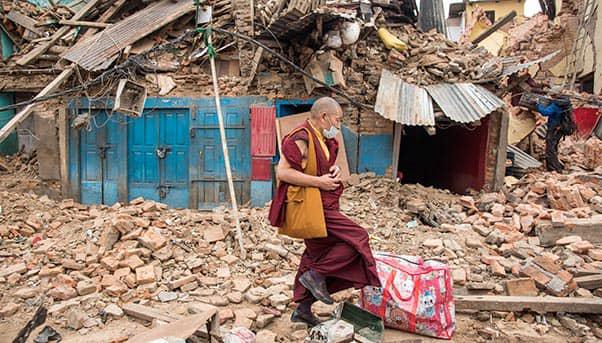
Natural disasters cannot be avoided, but they’re impact on a country’s people and economy can be limited by the resilience of its infrastructure. That is the conclusion of “WorldRiskReport 2016”. Produced by the University of Stuttgart for the United Nations, it compares the damage caused by earthquakes, floods, hurricanes and other events among countries. It found the cost varied depending on the quality of the infrastructure.
In its review of the 346 natural disasters in 2015 that caused 22,000 deaths, disrupted 100 million lives and caused $66.5 billion worth of economic damage, the report cites infrastructure’s role as a bulwark against the risk of a natural event turning into a disaster. Resilient roads, bridges and buildings guarantee connections between communities and facilitate the arrival of emergency services and supplies to wherever a natural event has struck.
What does the World Risk Index 2016 say
Looking at the degree of vulnerability of a country’s infrastructure in terms of its exposure to the risk of a natural event, the report produces a ranking based not only on the probability of this risk occurring but also on the ability of the country and its infrastructure to respond to it. The five countries that top the index are the South Pacific archipelago of Vanuatu, Tonga in Polynesia, the Philippines, Guatemala and Bangladesh. At the bottom are those that have reduced the potential impact of such an event by investing in sound infrastructure. Many of these countries are in the Middle East, including Qatar in 171th place, Saudi Arabia at 169, Bahrain at 165h and all of the United Arab Emirates at 163. Others include those from Europe such as Germany, Spain, France, Norway and Sweden, while Italy occupies the 119th position and the United States the 127th. Although natural events strike the country every year, the United States has been able to maintain a good standing in the index because of the quality of its infrastructure, remaining among the 50 most prepared countries.

In taking a look at the worst event of 2015, the report looks at the terrible earthquake that hit Nepal on April 25, 2015 and shook it again on May 12. The event brought eight million people out of a population of 28 million to their knees, killed 8,800 and injured 22,000 more. More than 500,000 houses were destroyed and another 250,000 damaged. Reconstruction costs reached $7 billion. Roads, telephone lines and airports were also hit hard, severely limiting communication. This has led to a domino effect across the country, the consequences of which are still being dealt with.
In Italy, the impact that the recent earthquake had on infrastructure was less devastating but no less significant. From the earthquake that struck central Italy in August to the subsequent quake that shook the region in October, the damage caused to roads seriously hindered the ability of rescue workers to reach the devastated towns. Just like Nepal, the cost of rebuilding will be very high.
Needless to say, a natural event can wreak havoc in any country, even one that is well organized or faces fewer chances of it happening.
In 2015, flooding in Europe caused $470 million worth of damage to roads and railways. Even in this case, the issue is infrastructure’s ability to withstand the shock of such an event. The difference is in the final count: the number of people affected and the cost of the damage caused. The earthquake that struck Sichuan, China in 2008, caused the loss of a great number of children’s lives because of the collapse of more than 12,000 schools. Looking at data produced by the World Bank and the conclusions drawn in the “Global Competitiveness Report 2015-2016” by the World Economic Forum, the report relates estimates that additional $1.5 trillion must be invested every year until 2020 to improve the breadth and quality of infrastructure in low- and medium-income countries. In Africa, for example, there are only 65 kilometres of paved roads for every 100,000 people against 832 in Europe and 552 in the Americas.
So it is not enough that a country has infrastructure – it has to have the right infrastructure of the best quality. «The term ‘critical infrastructure’ is used to emphasize such bottlenecks and secondary effects, since individual infrastructure elements may be of critical importance to the functioning of much larger systems,» the report says.
It emphasizes the need to modernize infrastructure by identifying the interventions to be made to reduce risk as much as possible. The risk factor, according to the report, increases not only on the severity of a natural event but also on the lack of proper infrastructure. The quality of roads and bridges, for example, can determine whether a country’s infrastructure will act as a bulwark to reduce the number of lives lost and the damage caused to its economy.

